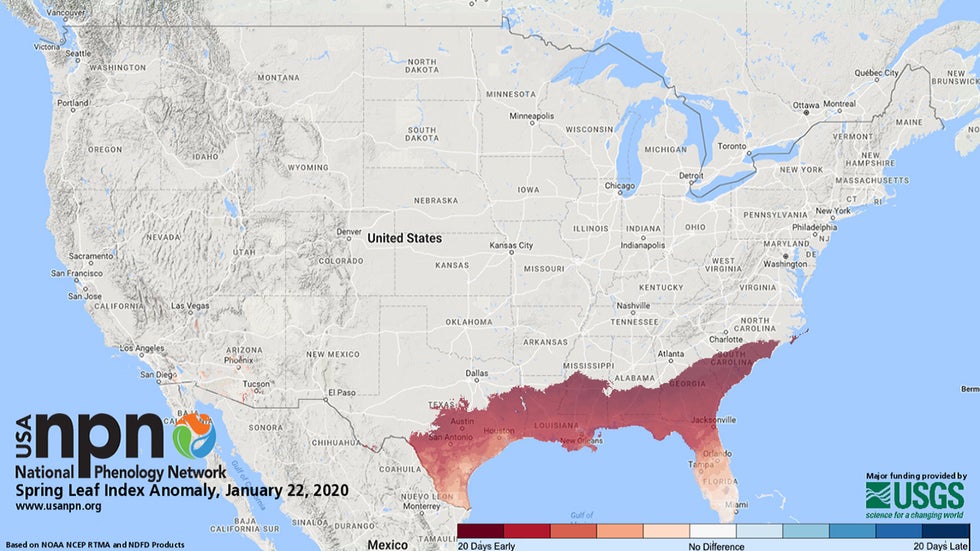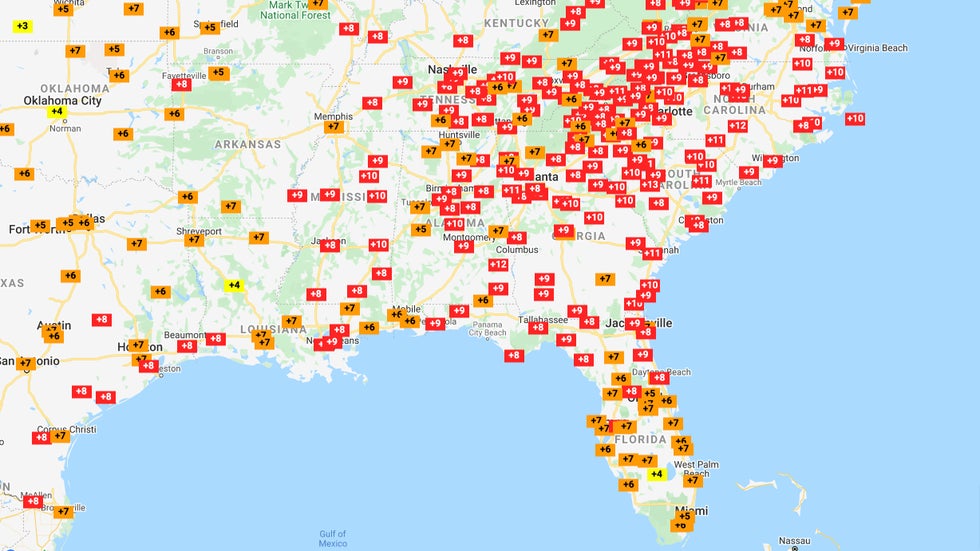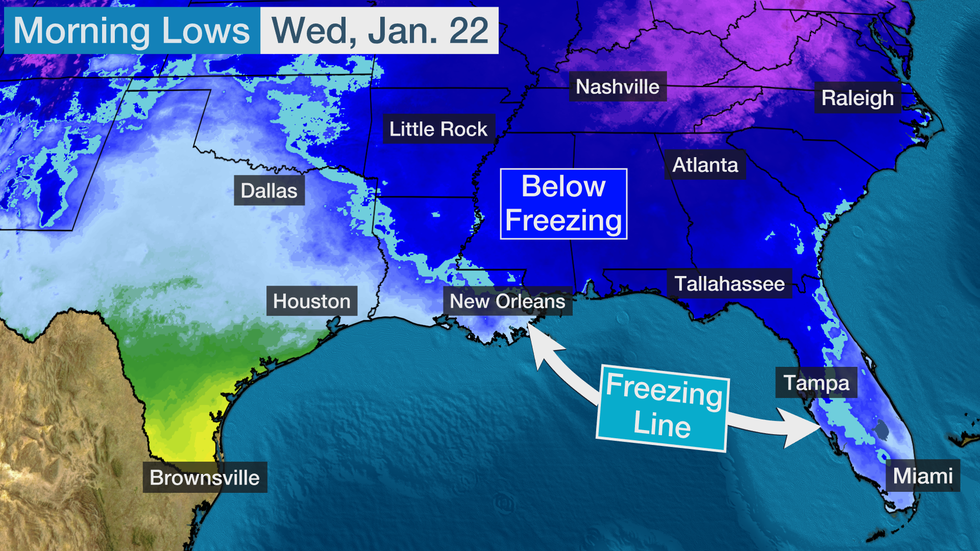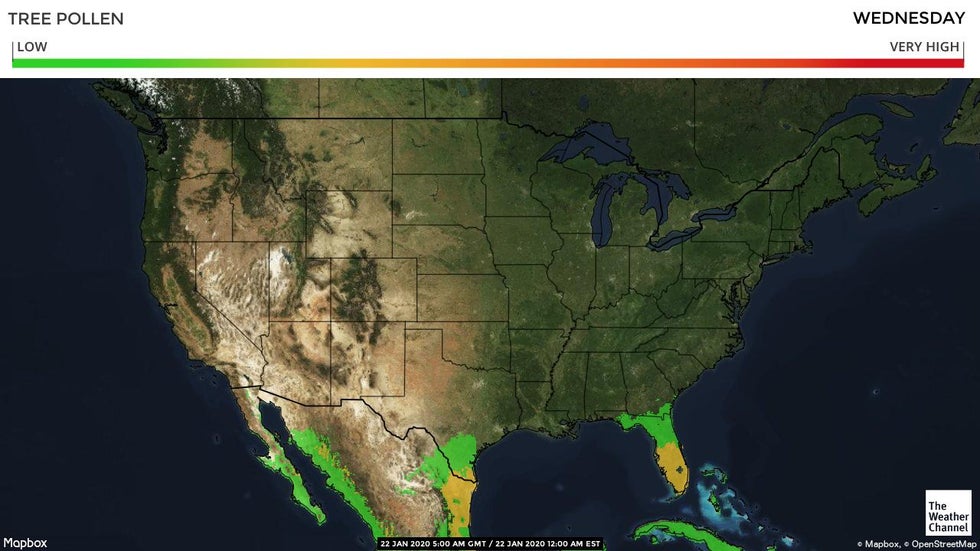
Mother Nature has put a pause on leafing plants in the South after midwinter warmth in January brought a taste of spring.
Spring conditions, in terms of plant growth, arrived in some locations along the Interstate 20 corridor as much as three weeks early. In that area, spring is when plants begin to produce more leaves.
Spring arrived in Austin, Texas, 10 days early; Jackson, Mississippi, and Charleston, South Carolina, 17 days early; and Wilmington, North Carolina, 22 days early, according to the National Phrenology Network (NPN).
So what brought the early spring? Largely, it was due to warmer temperatures.
Much of the Southeast has been 5 to 10 degrees above average since the beginning of the month. In some spots outside of Florida, it has also been a wetter than average January.

The warmth has been due, in part, to the large-scale weather pattern, which included a dome of high pressure settled over the East or Southeast.
This dome has deflected storm after storm into the Midwest or Northeast, keeping warm air locked into the South.
Then came the two days of real winter that Florida gets each year.
An unaltered batch of cold air from the Midwest finally made it to the Sunshine State Tuesday and Wednesday.
The freezing line dropped as far south as inland southwestern Florida on Wednesday morning, meaning cities like Jacksonville, Pensacola and Charleston had temperatures at or below freezing.
In some of the leaf-out cities, like Montgomery, Alabama, and Macon, Georgia, temperatures were at or below freezing for several hours on Tuesday or Wednesday morning, if not both.

These cities will likely see stunted plant growth for a while, especially where frost was able to develop, but blooming will resume soon.
Of course, where plants are beginning to leaf out, there is also a downside. Pollen began coating cars and sidewalks in Florida and southern Texas earlier this week before the cold air arrived.

This pollen was also a few weeks ahead of schedule in a few spots, especially in Florida.
While not much is in bloom yet according to NPN, some cars matched the colors on the map above in the last week due to rising pollen counts.
The cold temperatures should kill these pollen particles, but more will surely be produced in the weeks and months ahead.
The Weather Company’s primary journalistic mission is to report on breaking weather news, the environment and the importance of science to our lives. This story does not necessarily represent the position of our parent company, IBM.
The Weather Company’s primary journalistic mission is to report on breaking weather news, the environment and the importance of science to our lives. This story does not necessarily represent the position of our parent company, IBM.

No comments:
Post a Comment